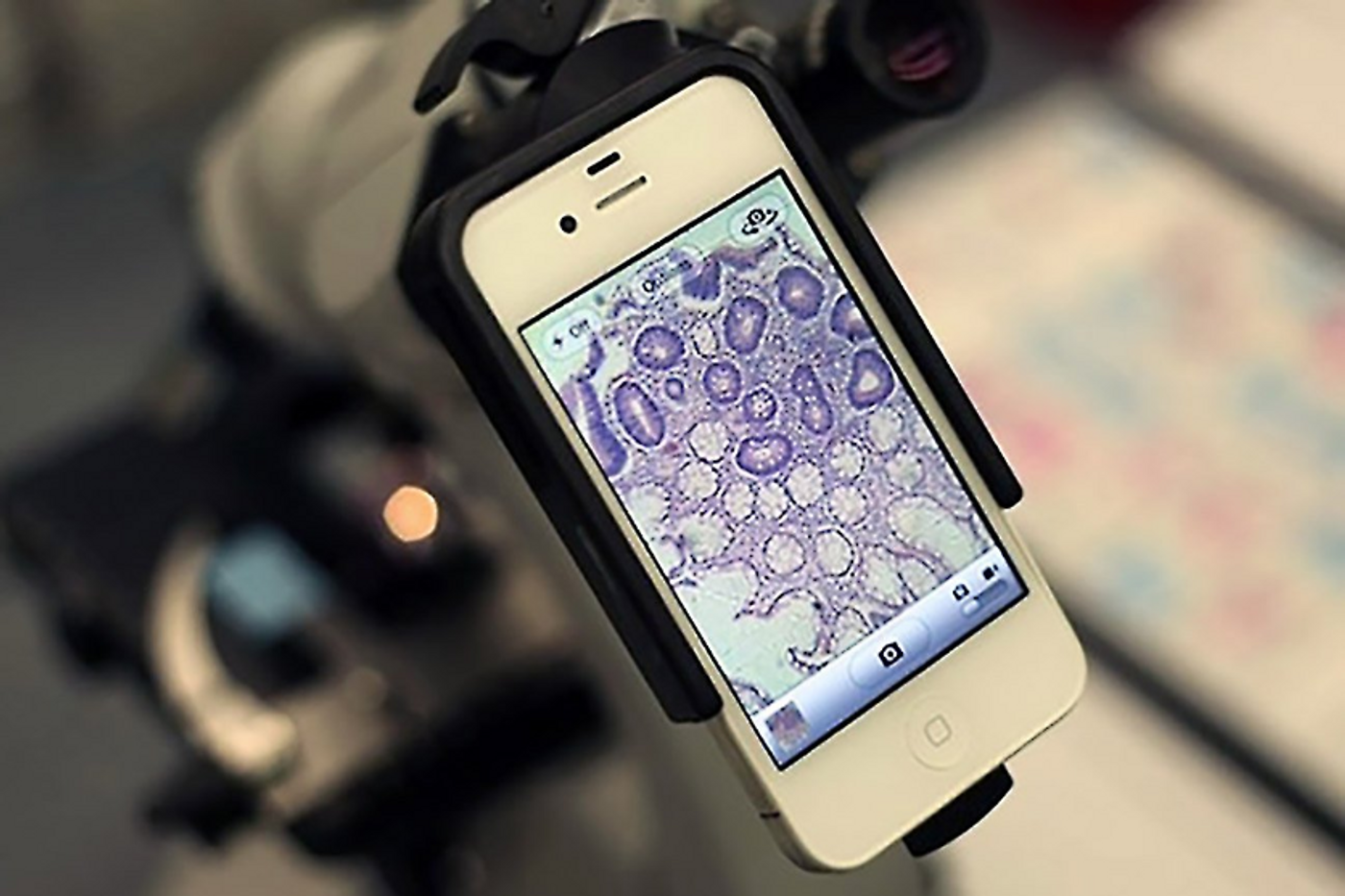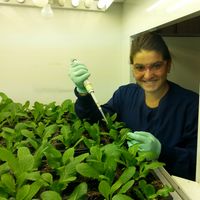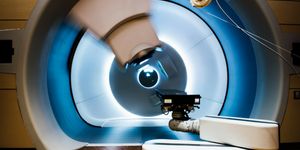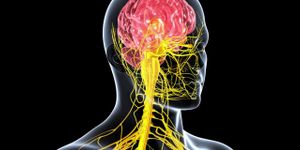Using a Smartphone to Diagnose Parasitic Diseases
The World Health Organization recently estimated that there are approximately 48.4 million illnesses attributed to parasitic diseases worldwide each year. Malaria alone is estimated to cause 660,000 deaths annually. The Neglected Tropical Diseases (NTDs) also affect millions annually including Chagas disease, echinococcosis, schistosomiasis, soil-transmitted helminthiasis, 28 African trypanosomiasis, cysticercosis, lymphatic filariasis, and scabies.
Smartphones offer cost-effective and alternative means to to diagnose diseases, specifically for diagnosis of parasitic diseases in developing counties. Credit: Entrepreneur
In developing countries, the accurate and rapid diagnosis of parasitic diseases is severely compromised due to the lack of essential diagnostic tools. The lack of access to a skilled workforce, expensive rapid diagnostic equipment including microscopes and nucleic acid amplification systems, as well as access to electricity compromises the ability to manage parasitic diseases in these areas. In low-to-middle income countries there is a need for the development of alternative and inexpensive point-of-care diagnostic tools.
According to a recent study published in the Journal of Clinical Microbiology, smartphones contain powerful built-in-sensors that have become of interest to medical professionals and scientists as alternative diagnostic tools. Use of smartphones present many advantages for use in areas with limited sources including their small size, convenience, computing capabilities, compact digital cameras, Global Positioning System (GPS) navigation, user-friendly features, and internet access. Scientists at the University if Melbourne in Australia have identified various categories of smartphone device diagnostic tools that should be further developed for use in the field.
The first type, they call smartphone standalone technology, includes the use of the smartphone itself as well as its applications for the interpretation of tomographic images and rapid diagnostic test results. One specific application, known as TickID can be downloaded on the iPhone and provides basic information and identification of selected tick species and tick-borne diseases. In the future, smartphone apps could be further developed for diagnosis of other important parasitic diseases.
The second type of smartphone diagnostic tool is the lens-mounted smartphone "microscopy". This tool allows for the mounting of a small portable lens on the smartphone camera that provides access to a powerful handheld microscope for the identification of parasites. Such scopes have previously been used to identify the presence of soil-transmitted helminth and Schistosoma eggs in urine and stool samples of school-aged children. While the device showed low-to-moderate sensitivity to detect the parasites, increased sensitivity could help improve detection of parasites at an affordable cost.
Smartphone-assisted manual microscopy is a third type of a smartphone diagnostic tool identified for parasitic infections. These manual microscopes include microscopic assemblies made of materials such as paper or 3D printed plastic with an embedded lens. Like the lens-mounted microscope, sensitivities were limited but highly specific showing promise for at-large screening of parasites in developing countries.
The fourth diagnostic tool type is known as smartphone-assisted automated microscopy. This type of tool includes the use of a dedicated smartphone app or algorithm for the automated detection of a specific parasite. For example, a two pattern recognition algorithm for the detection of S. haematobium eggs was developed and demonstrated slightly higher sensitivity and specificity compared to visual detection methods.
The fifth tool, identified as smartphone-assisted microfluidic technology, involves the use of lab-on-a-chip devices. This type of tool allows the ability if the smartphone to read in vitro measurements of biochemical reactions that occur in lab-on-a-chip devices. For example, anti-HRP-1-conjugated submicrobeads were mixed with 10% whole blood sample in a microfluidic lab-on-a-chip device and illuminated via smartphone detection of scattered light. Using light scattering and absorption characteristics, the smartphone was able to measure as low as 1 pg/mL of HRP-2 from blood in as little as 10 min.
Scientists conclude that although the use of smartphones in the diagnosis of parasitic diseases remains in its infancy, there are many opportunities for advancement of these technologies which would improve the diagnosis and management of parasitic diseases worldwide.









